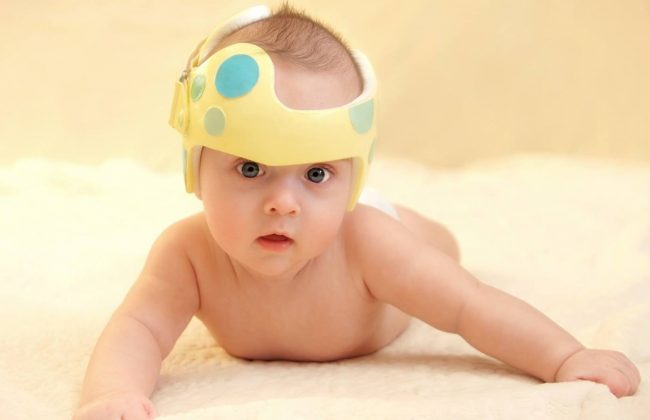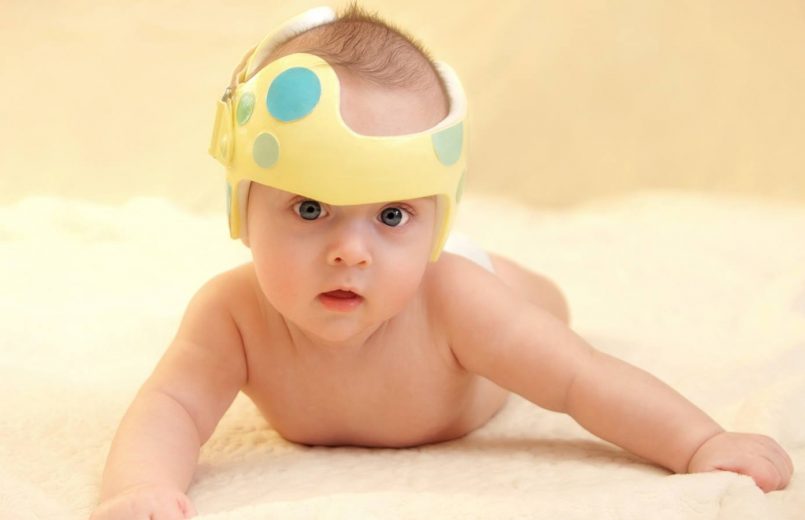Pediatric physical therapy helps infants and children with health problems. One of the most common disorders in newborns is plagiocephaly, a pathology that improves considerably thanks to physiotherapy treatment.
What is?
Plagiocephaly or square head syndrome is a common deformity and is characterized by the flattening or asymmetry of an area of the baby’s head.
Why does it occur?
The baby’s skull is a fragile and malleable structure, so constant pressure exerted on the same area of the head can cause plagiocephaly. Thus, many babies can be born with a deformity in the head due to the intrauterine position or due to the pressure suffered during childbirth. Normally, this imperfection is usually corrected only in about 6 weeks.
Plagiocephaly can also be caused after birth, what is known as “postural plagiocephaly”, the most common of all, and which is usually caused by external pressure on the baby’s skull. This can happen when a baby spends a long period in the incubator or because of the habit of always putting them to bed in the same position.
How is plagiocephaly manifested?
Positional plagiocephaly does not affect the brain and is not a cause of mental retardation or any type of neurological or motor alteration, it is merely aesthetic, unless there is a syndrome associated with it, which must be diagnosed by a child neurologist.
Plagiocephaly can cause postural torticollis. This means that babies are not able to turn their heads on their own for a while.
When to go to a physiotherapist for the treatment of plagiocephaly?
- When the baby is born with a head deformity and after 6 weeks it does not disappear.
- If you only turn your head to one side or show signs of torticollis.
- If we detect asymmetries or slight deformities in the baby’s head.
An early visual diagnosis by parents and the adoption of corrective measures effectively prevent or counteract cranial deformity.
What does physiotherapy treatment consist of?
Plagiocephalies diagnosed as mild-moderate have a good prognosis for treatment. At Masvitae we combine physiotherapy treatment developed by a professional, with postural hygiene measures where parental action is required.
After the initial assessment phase, the treatment we carry out at Masvitae consists of gentle, painless and harmless maneuvers that treat the bone alteration by shaping the baby’s skull.
Different rehabilitation techniques developed in several sessions will be carried out, always according to the needs of the patient. It is very important that the intervention begins before the child is six months old, when the skull is more malleable.
As we mentioned, the other part of the treatment consists of postural hygiene measures, and for this the involvement of the parents plays a very important role. The physical therapist will teach them recommendations to follow at home.
Postural recommendations to correct plagiocephaly.
We leave you some of the recommendations that can help you:
- Changes in the lateral position of the head (so that each time the nose is to one side), while the child sleeps, with the help of the tilt of the mattress.
- When the child is awake and under supervision, place him on his stomach for 30-60 minutes daily, but make sure he is always awake.
- Change the position of the crib so that the baby has to rotate his head away from the flattened part. We will do it when you try to look at the parents or at what might catch your attention in the room.
If you have any doubts about whether your son or daughter could have plagiocephaly, go to your trusted pediatrician where he will evaluate it and indicate the steps to follow. If you are diagnosed with mild or moderate plagiocephaly, physiotherapy performed by a specialist physiotherapist in Dwarka has a very good prognosis for treatment.


